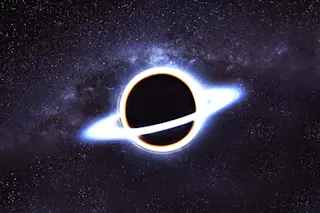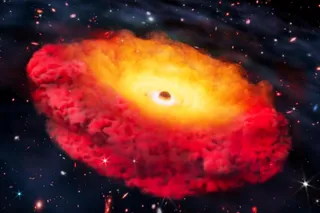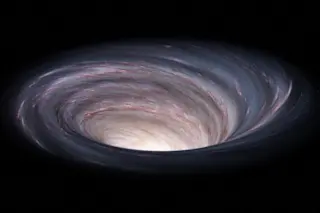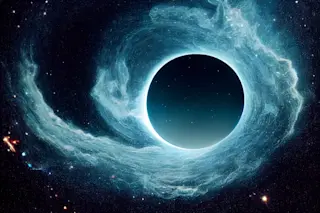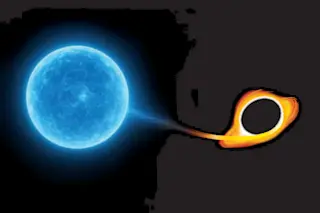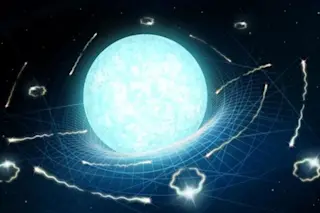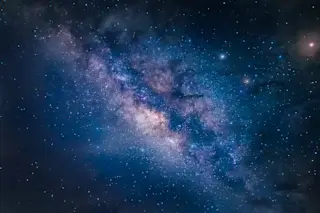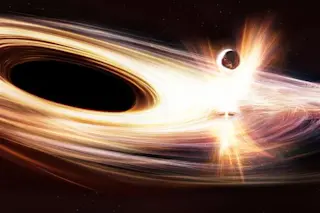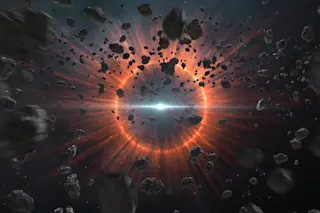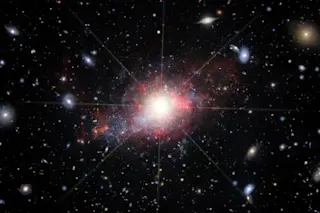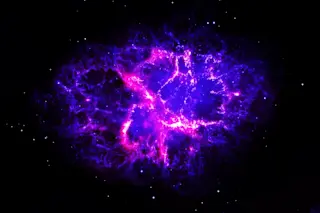In recent years, black holes have morphed from highly theoretical exotic possibilities to well-observed astrophysical objects. The observational evidence has come from sources such as the first observation of ripples in spacetime caused by black hole collisions and the first image of a black hole published in 2019.
Black holes are predicted by Einstein’s theory of general relativity, which describes the universe on the largest scale. But these objects must also distort spacetime on the tiniest scale, meaning that black holes must also have interesting quantum properties. The challenge for theorists is to find ways to unite the disparate theories of relativity and quantum mechanics in a theory of ‘loop’ quantum gravity that correctly predicts observations.
And these theorists have been busy. Over the last decade, they have developed an increasingly sophisticated theoretical understanding of black holes that could explain some of the biggest mysteries of cosmology.
Now the physicist and popular science writer Carlo Rovelli with Francesca Vidotto, both at Western University in Canada, review this progress and highlight some of its jaw-dropping conclusions. The new work suggests that when black holes die, they turn into white holes. That myriads of tiny white holes could be passing through the Earth at any time. And that these objects are an ideal candidate for the dark matter that cosmologists believe fills the universe but have never directly observed.
White Holes
Astrophysicists have long believed that black holes cannot be large static objects that remain unchanged over the lifetime of the universe. Instead, their work suggests that black holes evolve. Now theoreticians’ work with loop quantum gravity has thrown the details of this evolution into stark relief.
For a start, black holes gradually evaporate by emitting Hawking radiation. This causes the black hole horizon to shrink, while the volume of the interior does not. “This implies that an old evaporated black hole has a small horizon but a huge internal volume,” say Rovelli and Vidotto.
This shrinking continues until the hole reaches the tiniest possible size at the Planck Scale. At this point, the quantum energy density becomes great enough to resist further shrinkage. The hole rebounds and undergoes a strange quantum personality change. “At the end of the evaporation, a black hole undergoes a quantum transition to a white hole with a Planckian-size horizon and a vast interior,” say the researchers.
This is what cosmologists call a “remnant” of a black hole and understanding the properties of these remnants has been an important part of their work.
White holes have been studied for some time. Like black holes, they are legitimate solutions to Einstein’s field equations. “A white hole spacetime is simply the time reversal of a black hole spacetime,” say Rovelli and Vidotto.
And like black holes, white holes were not thought likely to play a major role in the universe. This view now needs to change, say Rovelli and Vidotto, just as it has for black hole because the two are intrinsically linked.
One potential stumbling block has always been that the solutions giving rise to white holes are unstable. But Rovelli and Vidotto point out that any instability should lead to the formation of a superposition of both black and white holes that is stable.
The difference is largely academic anyway. To a casual observer, a white hole is indistinguishable from a black hole. It is only their past and future that differ, albeit in a way that is inaccessible to most observers.
An important question is how long remnants last. Rovelli and Vidotto point out that for the remnant itself, the process of full dissipation must happen very quickly. But time dilation means that for a distant observer, it could take the lifetime of the universe.
“Time slows down near high density mass,” say the researchers. “An observer (capable of resisting the tidal forces) landing on a Planck matter distribution will find herself nearly immediately in the distant future, at the time where the black hole ends its evaporation.” In other words: “A black hole is a shortcut to the distant future,” they say.
If all this is accurate, the universe should be full of black hole remnants (or white holes). And their mass should have a gravitational effect on all the visible matter in the universe. That’s why remnants are good candidates for dark matter.
“Remnants are a dark matter candidate that does not require exotic assumptions of new forces, or particles or corrections to the Einstein equations, or physics beyond the standard model,” say Rovelli and Vidotto. “It only requires general relativity and quantum theory to hold together.”
Quantum Detector
But these particles will be very hard to detect because gravity is such a meagre force on this tiny scale. Yet Rovelli and Vidotto say there may be a way.
The idea is to create a mass that exists in two different locations at the same time in a quantum superposition of both states. Then, as a remnant flies past, it will interact via gravity more strongly with the nearer mass, causing the superposition to change in character. Detecting this change would be a sign that a dark matter particle has passed by.
Whether this would uniquely indicate the presence of a black hole remnant is another question yet to be decided. But the important point is that this kind of experiment is close to being possible today.
All that makes this an exciting area of physics to be in. And one that is likely to change as physicists gather more detailed observations of black hole collisions and other quantum gravity phenomenon. So watch this space — black holes, white holes and Planck stars are set to become the coolest things in astrophysics (as if they were ever anything else)!
Ref: Planck stars, White Holes, Remnants and Planck-mass quasi-particles : arxiv.org/abs/2407.09584


